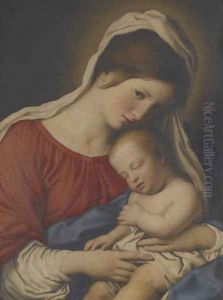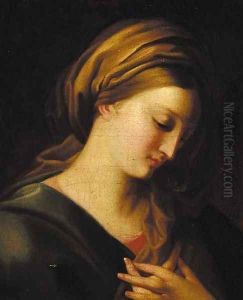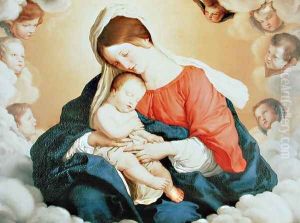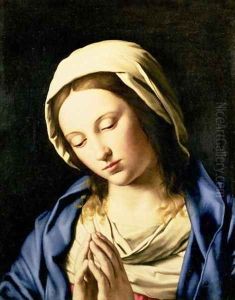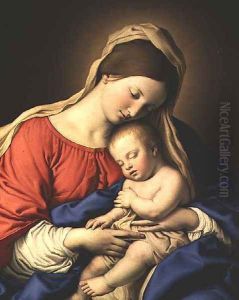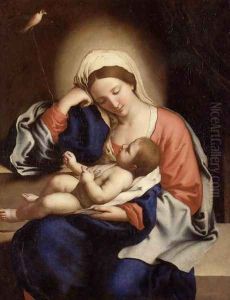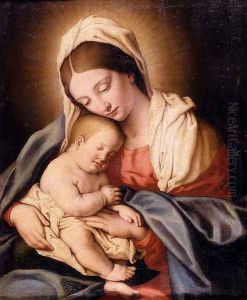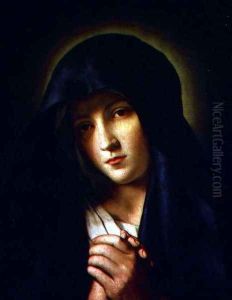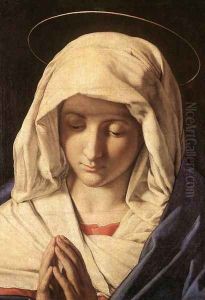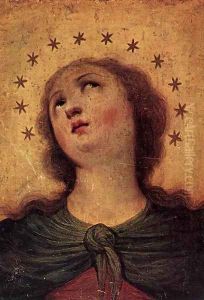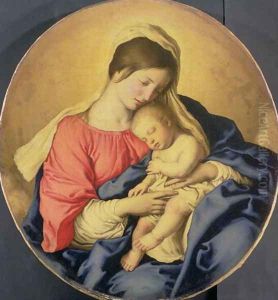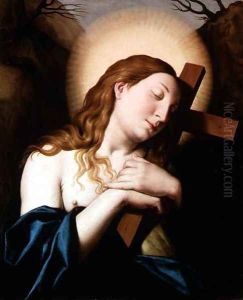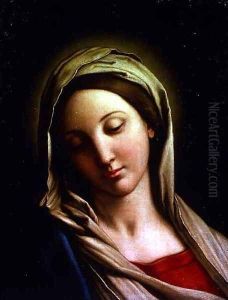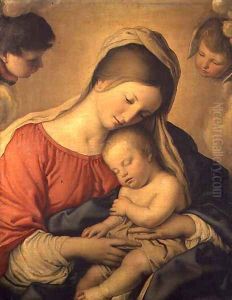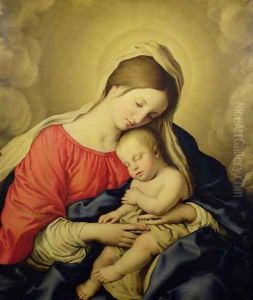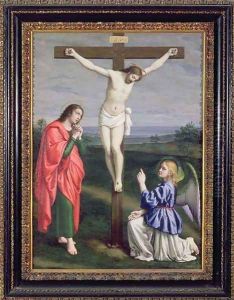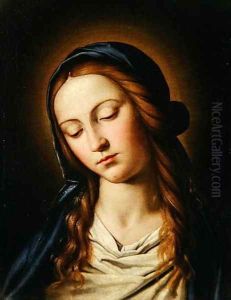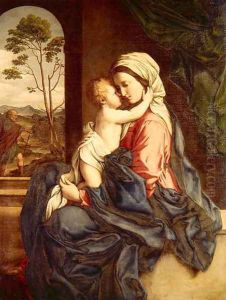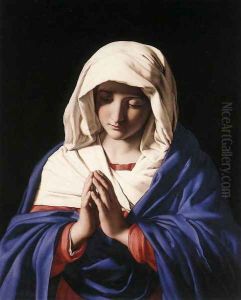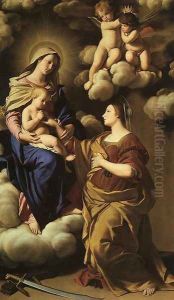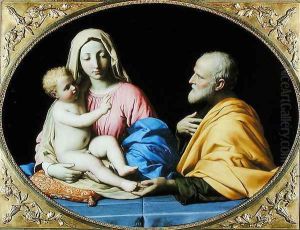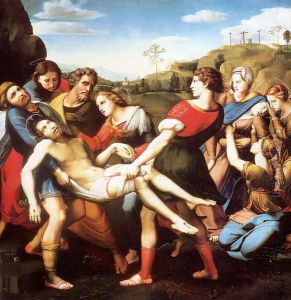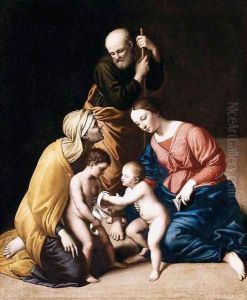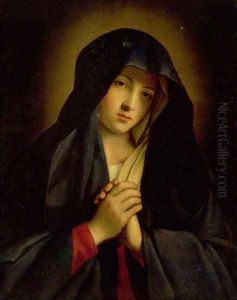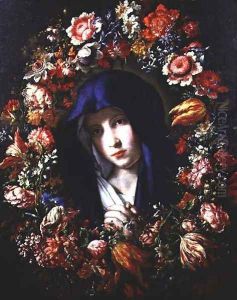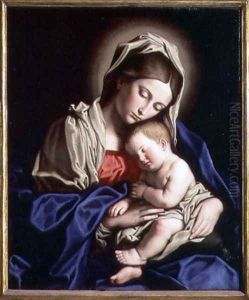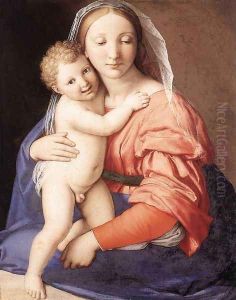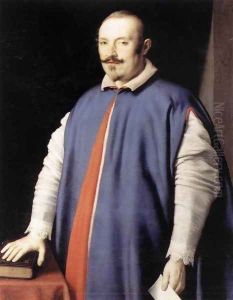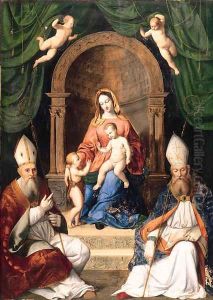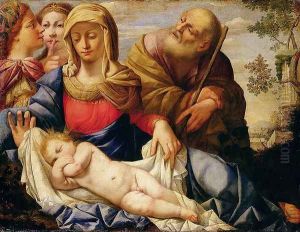Francesco de' Rossi (see Sassoferrato) Paintings
Francesco de' Rossi, known as Il Sassoferrato, was an Italian painter born in 1609 in the small town of Sassoferrato in the Marche region of Italy. His nickname, Il Sassoferrato, was derived from his place of birth. Sassoferrato's work is renowned for its devotional subject matter, meticulous technique, and the serene and contemplative nature of his paintings.
Sassoferrato's early life and training remain somewhat obscure, but it is believed that he was initially trained by his father, who was a painter and draftsman. Later, he may have studied in Rome, where he would have encountered the works of the great masters of the High Renaissance and early Baroque periods. While the influence of the Bolognese school, particularly the work of Guido Reni, is evident in his paintings, Sassoferrato did not adhere strictly to the Baroque style that was prevalent during his lifetime. Instead, he developed a personal style that combined elements of Renaissance classicism with a deeply spiritual and introspective approach.
Most of Sassoferrato's work consisted of religious themes, with a particular focus on the Virgin Mary. He was known for his Madonna paintings, which were often characterized by their simplicity, purity, and the gentle expressions of the figures depicted. The artist's use of clear, bright colors and smooth brushwork contributed to the tranquil and devotional atmosphere of his pieces. Sassoferrato's paintings gained popularity particularly among private collectors and for use in private chapels.
One of his most famous works is the 'Madonna of the Rosary' (1643), which is housed in the Pinacoteca Vaticana in Rome. His art was also influential in promoting the veneration of the Immaculate Conception, a popular theme in Counter-Reformation art. Despite the quiet reverence of his paintings, Sassoferrato did not achieve significant fame during his lifetime, and his work was often overshadowed by more dramatic and emotionally charged Baroque artists.
Sassoferrato's art fell into relative obscurity after his death in 1685. However, his work experienced a revival of interest in the 19th century when the Nazarenes, a group of German Romantic painters, admired his devotion to religious subject matter and his pure, unadorned style. Today, Sassoferrato is recognized for his unique contribution to 17th-century Italian painting, offering an alternative to the dominant Baroque aesthetic of his time. His works can be found in major museums and collections around the world, appreciated for their serene beauty and spiritual depth.
